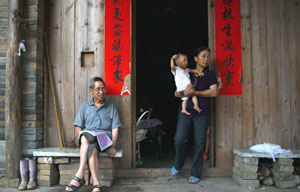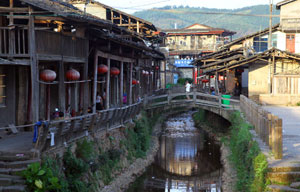The land that time recalls
Daxu bazaar has seen better days. It used to be a major trading center on the Lijiang River waterway. Li Yang reports in Guilin of Guangxi that it is making somewhat of a tourist revival.
Daxu bazaar prospered for 1,000 years as part of the Lijiang River waterway, but today all that remains are memories and some wood buildings, bridges and wharves. Located on the north bank of Lijiang River in Lingchuan county, Guilin, the Guangxi Zhuang autonomous region, local businessmen there have capitalized on Daxu's colorful past, which has become a popular tourist attraction in recent years. The bazaar is a 2.5-km-long and 4-meter-wide street built in the early Song Dynasty (960-1279). The government established a taxation bureau in Daxu in the late Song, and up until the 1940s most of its 15,000 residents were businessmen.
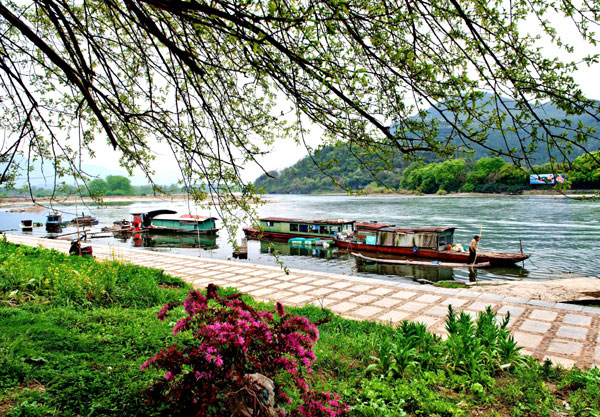 |
|
The Lijiang River, once the lifeline of Daxu's trade, is now a tourist attraction. Provided to China Ddaily |
They sold ginkgo, sesame, chestnut, tung oil, pearl barley, garlic bolts, bamboo shoots, dried fish from Hunan, Jiangxi and Guangdong provinces, and transported kerosene, matches, cloth and other products to inner China.
There were 13 stone wharfs, among which five still function today and are connected with the main street by five narrow streets.
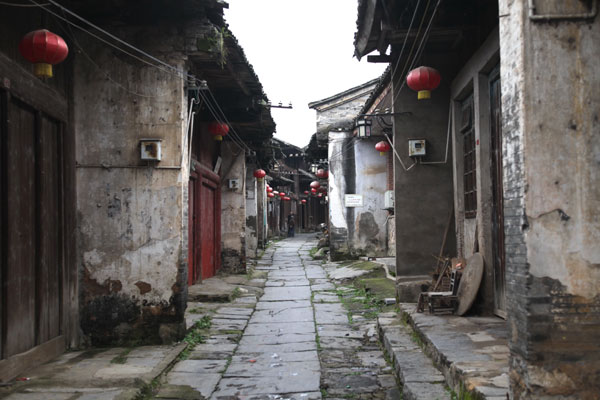 |
|
Daxu bazaar is a far cry from its glory days, with the decline of the waterway transportation and trade along the Lijiang River affecting the once bustling center. Huo Yan / China Daily |
The wooden houses of Daxu are unique. For example, the 70-something Zhou Changfu's house used to be a storehouse and was built on stone bases with fir wood and tiles, "without a single nail".
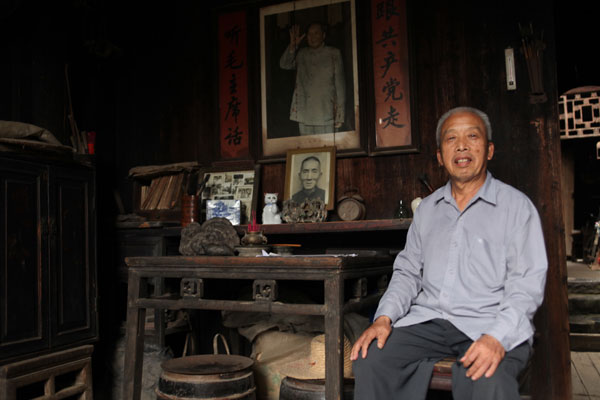 |
|
Zhou Changfu's home is a fine example of the traditional residences in Daxu, with ancestral tablets and family photos in the home's central room. Huo Yan / China Daily |
The first room, of about 15 square meters, opens onto the street and on the side of the storefront are three removable planks.
"My grandfather removed the planks at 6 am and closed them at about 8 pm," Zhou says. "There were all kinds of goods related to the kitchen sold in the first room, such as rice, brown sugar, salt, liquors, tobacco, ginkgo, peppers, star anise, soy sauce, vinegar I can recall the mixed smells of the room even now."
A basement stored fruits, vegetables, liquors, vinegar and soy sauce, while a staircase leading to a large attic stored many other goods. On the corridor wall is Zhou's collection of beam scales, bamboo baskets, abacuses and an official's cap from the Qing Dynasty (1644-1911).


